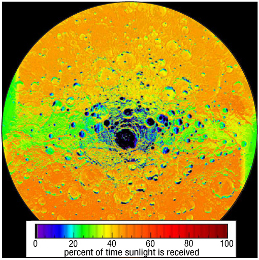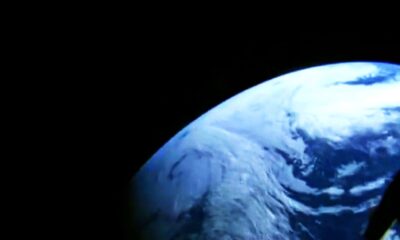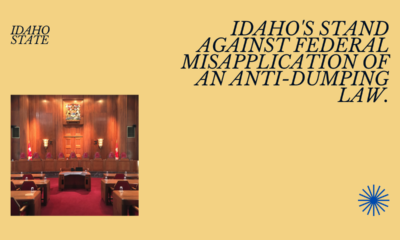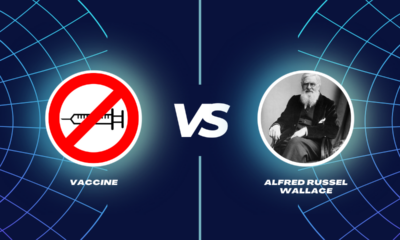Creation Corner
Mercury ice should have blown away in meteor showers

The Mercury ice excites everyone who hears about it. After all, people forget that even Mercury has areas of endless shadow cold enough to hold ice. But they smugly assume that the ice would sublimate slowly, if at all, even over billions of years. If the ice rested quietly, and nothing disturbed it, then it would stay, even that long. But it does not rest quietly. Meteors of all sizes bombard it all the time. In millions of years, and certainly billions, those meteors would have blown the ice away.
The Mercury ice problem
The MESSENGER rocket probe now confirms that Mercury has ice on both poles. The south mercurial pole alone has enough ice to bury Washington, DC 2.5 miles deep. Most scientists agree that comets, and perhaps some water-laden asteroids, carried the Mercury ice to Mercury. As these (and other) objects fell, they made craters that would stay in shadow forever. Mercury has no atmosphere, so the water vapor would condense, freeze, and collect in those craters.
But why does Mercury still have so much ice on its poles? Would the ice stay there? How fast does water ice sublimate away from a deep-cold (100 kelvin) region?
Conditions of the Mercury ice

Map of Mercury’s south pole, showing how often each part of the surface is in the sun. The dark purple regions are always in shadow. That’s where the MESSENGER probe found the Mercury ice. Graphic: NASA, reprinted in In the Beginning: Compelling Evidence for Creation and the Flood by Walter T. Brown. Used by permission.
The conditions that affect the Mercury ice are more than the surface temperature of the craters that hold it. At 100 kelvins, any of those giant cups should hold that ice for a long time. Especially if the ice is dirty.
If, that is, nothing disturbs the ice.
Meteoric bombardment
But something does disturb the Mercury ice. The planet Mercury has meteors falling on it all the time. This makes Mercury no different from Earth’s Moon, or Ganymede, or Pluto, or any other dwarf planet or satellite that has no atmosphere. Those meteors can be as lightweight as one ten-trillionth gram (or lighter), and as heavy as 2.71 quintillion grams. And the lighter-weight the objects, the more of them bombard any airless object every second.
Uniformitarianism demands that any process we measure today, has always lasted, and at the same rate, and certainly no slower. Furthermore, conventional astronomers say that a vast number of meteors bombarded the Moon, and by inference Mercury and all other airless objects, from 4.1 to 3.8 billion years ago. This second fact applies to the Mercury ice if we assume the Oort Cloud theory of comets. For any other theory, only the “background bombardment” would apply.
So even under usual conditions, a constant stream of boulders, rocks, and dust—lots of dust—falls on Mercury all the time. This dust has no atmosphere to slow it down. So it hits just as fast as it came in. It vaporizes at once and turns anything it hits into powder—or vapor. (In fact, the dust on the moon is 66 parts pulverized Moon rock and one part meteoritic dust.)
After millions of years of that, no amount of water ice would last. Certainly not enough to bury a major US city two and a half miles deep! And if the Mercury ice got to Mercury ahead of the Late Heavy Bombardment, that episode alone would have blown the ice to the solar winds. And remember: Jan Oort suggested the comets all formed 4.5 billion years ago in the Great Solar Nebula.
What happened instead?
Instead, the Mercury ice fell to Mercury, not billions or even millions of years ago, but thousands. Forty-four hundred years ago, give or take ten, to be more precise. (The date that Nebuchadnezzar II destroyed the first Jewish Temple, the king lists of the Kingdoms of Israel and Judah, and the annals of Moses, Joseph, Jacob, Isaac, and Terah, let us fix the date: 2349 BC.) The Early and Late Heavy Bombardments were both one. Those heavy objects fell first, and then the comets holding all the water that became the Mercury ice. And from that day to this, meteors, from microscopic to boulder-sized, have chipped away at the Mercury ice. But four and a half thousand years is not long enough for those objects to blow that ice out of those craters.
Thus the Mercury ice is a memorial to the greatest catastrophe the Earth ever knew. That catastrophe also affected many other objects in the Solar system, including Mercury.
Thanks to Walter T. Brown, Jr. for sharing his insight into the problem of the Mercury ice and how meteoric bombardment should have affected it much more than it has.
Related:
[subscribe2]
Terry A. Hurlbut has been a student of politics, philosophy, and science for more than 35 years. He is a graduate of Yale College and has served as a physician-level laboratory administrator in a 250-bed community hospital. He also is a serious student of the Bible, is conversant in its two primary original languages, and has followed the creation-science movement closely since 1993.
-

 Education3 days ago
Education3 days ago‘Grading for Equity’: Promoting Students by Banning Grades of Zero and Leaving No Class Cut-Ups Behind
-

 Civilization5 days ago
Civilization5 days agoEarth Day Should Celebrate U.S. Progress & Innovation
-

 Family2 days ago
Family2 days agoIdaho defends against abortion mandate
-

 Civilization3 days ago
Civilization3 days agoNewsom plays silly abortion politics
-

 Education5 days ago
Education5 days agoThe Intifada Comes to America. Now What?
-

 Constitution1 day ago
Constitution1 day agoPresidential immunity question goes to SCOTUS
-

 Civilization4 days ago
Civilization4 days agoEarth Day – part of cultural Marxism
-

 Civilization4 days ago
Civilization4 days agoWaste of the Day: China Still Owes Over $1 Trillion to American Bondholders















[…] Reprinted from Conservative News and Views Your email: Share this:EmailPrintFacebookLinkedInStumbleUponTwitterTumblrRedditGoogle +1 This entry was posted in News and tagged astronomy, creation, evidence, Global Flood, scientific theory by Terry Hurlbut. Bookmark the permalink. […]
Chronic Colonic liked this on Facebook.
Theresa Brooks liked this on Facebook.
“Uniformitarianism demands that any process we measure today, has always lasted, and at the same rate, and certainly no slower.”
Uh, no it doesn’t.
Seems mighty inconvenient, doesn’t it, that pesky uniformitarian paradigm. Which is why evolutionists now ignore it whenever the ignoring suits them. Behold postmodern science!
“Seems mighty inconvenient, doesn’t it, that pesky uniformitarian paradigm”
Not at all. It’s just that, like evolutionary theory and the Second Law of thermodynamics, it doesn’t say what creationists seem to think it does.
Oh, yes, it does. It’s just that evolutionists don’t want to admit it.
“Oh, yes, it does.”
No, Terry, it doesn’t.Uniformitarianism states that the same process operate throughout the universe and always have. That means, for example, that free oxygen in an atmosphere will always oxidise certain other elements present on the planet. It does NOT mean that the rate of a process has always remained exactly the same. That may have been the view of some geologists a couple of hundred years ago, but we’ve moved on a bit since then.
“a constant stream of boulders, rocks, and dust—lots of dust—falls on Mercury all the time.”
Correct. It’s known as interplanetary dust.
Do you know what the most common compound in interplanetary dust is? Water ice.
Not enough to replenish what that dust, in whatever form, would strip away with the violent force of its impact. Dust falling on an airless body has nothing to hold it back from hitting with the force of a million micro-bullets.
To say nothing of the dust that lands on the parts of the mercurial poles that still get enough sunlight to boil away any water ice that falls on them.
“Not enough to replenish what that dust, in whatever form, would strip away”
You don’t seem to be getting it. Much of the dust that you claim would strip the ice away IS ICE.
Here’s another one for you. The ice on Mercury is in deep craters at the poles. Most of the interplanetary medium is on the plane of the ecliptic. From the point of view of a polar crater it’s coming in almost parallel with the ground. Is it going to hit the ice or the outer rim of the crater?
Really, this ice is not a mystery. It’s interesting, but it’s not hard to explain. A planet has deposits of the most common chemical compound in the entire universe? Wow. Terry, the solar system is FULL of ice. The only place it can’t exist is Venus.
Just because it’s made of ice, doesn’t mean it would stick, or fail to strip away the ice on deposit.
“Just because it’s made of ice, doesn’t mean it would stick, or fail to strip away the ice on deposit.”
*sigh*
Terry, the point you are missing is that Mercury is being constantly bombarded with ice. It doesn’t just bounce back into space, you know.
The point you are missing is the Law of Conservation of Energy. All the kinetic energy of the dust turns to heat. Enough to vaporize dust and surface ice on impact. And to take it out of the craters and into areas that get enough sun to boil it away.
Terry wrote:
The point you are missing is the Law of Conservation of Energy. All the kinetic energy of the dust turns to heat. Enough to vaporize dust and surface ice on impact.
Geno:
Why wouldn’t the law of conservation of energy apply equally to material that fails to escape Earth’s gravity from this huge steam explosion?
If only 5% of the mass Brown says was launched to space fails to escape Earth’s gravity, the heat of reentry is enough to boil every drop of water on Earth.
I believe you’re assuming that the mass would fall back to earth without obstacle.
I acknowledge your change in position. Your initial claim was that ice on Mercury could not be even millions of years old (“(r)emember: whatever else conventional scientists say happened, happened millions of years ago at least. The Mercury ice, and the lunar ice, should have sublimated away by now. Yet MESSENGER found enough ice to bury Washington, DC in two and a half miles of ice. That much ice should not be there.” and “the comets are not resupplying it as fast as it is sublimating away.”). When it was pointed out to you that sublimation presents no such barrier to the ice persisting more or less indefinitely at low enough temperatures such as those found in the polar craters on Mercury, you (or Dr. Brown) shifted to an argument about meteoroid bombardment. Excellent; abandoning erroneous arguments and pursuing better ones is one of the bases of scientific progress.
However, you should not think that these arguments have not already occurred to scientists active in the field. There has been a lot of modelling work done on possible exogenous and endogenous sources of water ice on Mercury. While Mercury is generally believed to be depleted in volatile compounds like water due to its formation close to the Sun as well as possible early heating due to massive impacts, there do appear to be features on Mercury that are consistent with pyroclastic volcanic eruptions, suggestive of concentrations of volatiles (like water) in magma equivalent to those on Earth at some point in Mercury’s geologic history (Explosive volcanic eruptions on Mercury: Eruption conditions, magma volatile content, and implications for interior volatile abundances, Kerber et al, Earth and Planetary Science Letters v. 285 issue 3-4, pps 263-71).
Still, the radar data from Mercury suggests a layer of nearly pure ice covered by regolith or other material, which is more consistent with rapid deposition from a singe event or few discrete events rather than slow accumulation in a cold trap from gradual outgassing elsewhere on the planet. The reason that that is felt to be true is modeling by individuals like Moses et. al. (External sources for water for Mercury’s putative ice deposits, Icarus, v137 issue 2, 1999, pps 197-221), in which impacts from Halley-type comets, Jupiter-family comets, micrometeoroids, and asteroids are modeled to compare expected ice delivery and distribution. In that analysis, a few impacts by large comets and/or asteroids appear to best fit the radar findings, although all were able to deliver large amounts of ice to Mercury over different time scales.
The effects of space weathering have not been ignored, and it turns out that they are more complex than your proposal of meteors “blowing the ice away”. For one thing, deposition of a layer of regolith from influx of dust grains produces a protective layer over ice, reducing damage from subsequent impacts (as a rule of thumb an impactor only penetrates to a depth of about its own diameter). In addition to loss from meteroid gardening, there are also effects from cosmic ray impacts and sputtering from ions in the solar wind. These effects have been explored for ice on both the Moon and Mercury (Two-dimensional distribution of volatiles in the lunar regolith from space weathering simulations, Hurley et. al., Geophysical Research Letters vol 39, L09203, 2012) and (Burial rate of Mercury’s polar volatile deposits, Crider and Killen, Geophysical Research Letters, vol 32, L12201, 2005)
The take-home message from these studies is that the best fit for the current Mercury ice data appears to be that the ice originated from a relatively recent impact with a volatile-bearing asteroid(s) or comet(s). By relatively recent something on the order of 50 to 100 million years ago is meant, based on the purity and thickness of the ice and the depth of the regolith overlying it. This analysis is of course dependent on a number of assumptions; for example, if the initial ice layer was thicker, it can be older. No doubt these conclusions will be subject to revision as additional data becomes available which place new constraints on the models.
So, again, what calculations of Dr. Brown’s show that meteorite impacts (plus sputtering and radiation) would disperse the Mercury ice deposits so rapidly that we should conclude that they are less than 10,000 years old rather than 50 or 100 million years old? It seems that there were no calculations for the sublimation effect, and I hope that that is not the case here as well.
Please excuse the horrible formatting of the references; I’m lacking the widget that normally handles those for me.
“I believe you’re assuming that the mass would fall back to earth without obstacle”
What sort of obstacle did you have in mind?
The atmosphere itself. And the one thing that Geno consistently ignores is that the water, on its way up, would be expanding rapidly and escaping tremendous compression. When fluids expand that rapidly, they cool. That’s how refrigerators work. And water is the best refrigerant known to man. (Or it would be if you could design a system that wouldn’t freeze the water during the expansion stage.)
Terry wrote:
The atmosphere itself.
Geno:
Me too.
*****
Terry:
And the one thing that Geno consistently ignores is that the water, on its way up, would be expanding rapidly and escaping tremendous compression.
Geno:
Nope. I don’t ignore that at all. In fact, in my “Fire and Brimstone” analysis, I use a temperature of absolute zero before it begins to fall back. How much more cooling should I allow?
Even then, if Dr. Brown’s launch mechanism is an incredible 95% efficient, the 5% that fails to reach escape velocity contains enough kinetic energy to heat every drop of water on the surface of the planet from freezing and boil it.
*****
Terry:
When fluids expand that rapidly, they cool. That’s how refrigerators work.
Geno:
Exactly. As a liquid vaporizes it absorbs energy from its surroundings..When the vapor condenses, it releases the energy it had absorbed. So just how much heat energy do you think SCW will absorb from its surroundings as it cools from over 700F to the ambient temperature?
*******
Terry:
And water is the best refrigerant known to man.
Geno:
There’s a reason we don’t use 700F water as a coolant for our homes. That’s not far from the 600F water used to cool nuclear reactors.
*******
Terry:
(Or it would be if you could design a system that wouldn’t freeze the water during the expansion stage.)
Geno:
Oops.
I’m sure Dr. Brown is watching. I’ll have his reply as soon as he can produce one. He might ask you to show your work. Are you prepared to do that?
Terry commented:
I’m sure Dr. Brown is watching. I’ll have his reply as soon as he can produce one. He might ask you to show your work. Are you prepared to do that?
Geno:
It was posted on your “Examiner” blog in Nov, 2010. IIRC, the only change I made was to change 10% (of the mass now in space) to 5% (of the mass launched) to reflect Dr. Brown’s position that half of the mass initially sent to space has impacted somewhere.
Can you ask Dr. Brown what model he used to determine that meteorite impacts would have obliterated the Mercury ice in thousands of years rather than the millions to hundreds of millions of years proposed by mainstream scientists like Crider and Killen?
Has Dr. Brown provided you with an answer yet for either the Mercury meteoroid model question or the heat-of-reentry question?
Not yet. But maybe you don’t appreciate it, but we have this little thing called Christmas.
Now that the Feast of the Epiphany has passed, could you please remind Dr. Brown that we would like to hear his responses to the questions raised here?
Terry wrote:
I believe you’re assuming that the mass would fall back to earth without obstacle.
Geno:
Other than Earth’s atmoshpere, which would become super-heated due to the friction of re-entry, what obstacle do you (or Dr. Brown) propose? Keep in mind, this is ejecta that failed to reach escape velocity